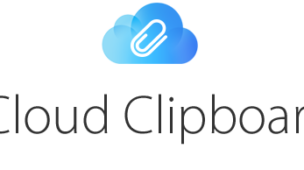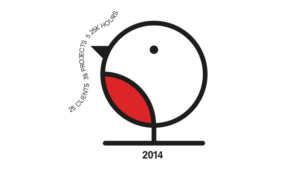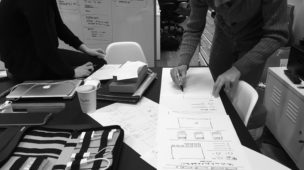What is spec work? Speculative design work requested in order to win a project, usually in a competitive pitch scenario.
Why would clients ask for spec work?
- They might not understand the process of design and the steps that must be completed in order to arrive at a good solution.
- They’re used to working with branding or advertising agencies where aesthetic design concepts are (to a greater extent) what determines a project’s success. This is not the case with UX Design.
- They want to reduce the risk by testing the agencies ability to deliver.
What’s the solution?
Don’t ask for spec work. Your project will suffer if you do.
Let us explain….
In design, good results are born from process, not conjured from imagination. Design is not art. Creativity is not design. Design is the process of creating something that must be used.
To get to a quality solution one must fully understand the context of the project objectives and test all assumptions. A process including detailed research, iteration and validation must be allowed in order to determine the correct course of action. Our clients pay for a well designed solution that will benefit their business, not a design file to push through to development. This can only be achieved by spending time to follow the required process – a time consuming activity that cannot be compressed into the timelines of a pitch.
We like to be paid for our services, it’s how our business is viable.
To do speculative work right would mean completing the entire design process – doing all the work required to solve the problem and deliver a solution. We are not prepared to do the entire job in the hope of being selected and only then getting paid. The financial model for agencies would collapse if this were expected.
There shouldn’t be a need for any more reasons not to do spec work, but if you need some they might include:
Client access is too limited.
Designing great experiences is a collaborative process that involves a team of people working well together to solve the right problems in the right way. This includes a significant amount of input and collaboration from our clients. In a pitch scenario the client does not have enough time to work this closely with each of the participants. As a result our process suffers greatly.
It’s a throwaway exercise – don’t shoot yourself in the foot.
As the design process cannot be followed, everything produced is literally speculative – in that the results are fabricated without proper research understanding, iteration, testing or validation. The end product would be fabricated from a surface level understanding of the brief. The results of such an exercise cannot be brought forwards into a project once the work is won, but now that is has been introduced this unsuitable result cannot be merely thrown away. It influences what follows, meaning the full process being paid for is now compromised and could lead to less effective end results.
If everyone asks for spec work, everyone costs more.
In a pitch scenario only one agency can win, but all those invited need to do the work to submit their entry. This time costs the business money. In order for the agency to be able to exist, this cost is baked into the model – agency rates have to reflect the time it takes them to complete both billable and nonbillable work. The more everyone asks agencies to do unpaid, the more the paid rate needs to increase to make the businesses viable. By asking for spec work clients are making their project and every project they’ll ever do in the future cost more.
How can a client decide without seeing an indication of what we can do?
We’re not selling a layout, we’re selling a solution. If clients want to see what we can do, we have a portfolio overflowing with projects that clearly demonstrate our abilities. Asking us to conjure a layout for a brief will reveal nothing. If you’re coming to us with a brief, then the project must be functional. If a client is only interested in the way it looks then the project and probably their business (or their job in that business) is likely not to succeed.
Reducing the risk.
We often try to get clients to break off a smaller piece of work as a test exercise to prove ourselves and also establish a good working relationship before committing to anything larger. By committing to smaller pieces of work, a client is free to change supplier at any time, taking the work in it’s current state with them.
So please don’t ask for spec work. We’ll say no, and hopefully this goes some way to explaining why. Don’t just take our word for it. Here’s a few independent views on the subject:
- https://www.nospec.com/
- http://99u.com/articles/55323/erik-spiekermann-no-free-pitches
- https://boagworld.com/design/why-speculative-design-is-wrong/
- http://www.8164.org/pay-the-designer/
- http://www.zeldman.com/2007/08/14/dont-design-on-spec/
- http://www.markboulton.co.uk/journal/the-personal-cost-of-designing-on-spec
More can be found here.
When a prospect who owned a world-wide chain of high-end hotels wanted us to do a complete spec identity for his business, I replied, “Okay. But our team needs to stay in at least three of your hotels in different countries before we decide if we’ll do the spec work. If we like the experience, then we’ll do it. If not, then we’ll pass.”
“But we don’t give away nights at our hotels for free.”
And then he paused and said, “Point taken.”
– Spike Jones
Caveat
As much a we would love to say these are rules carved in stone, we have on occasion had to do spec work. Despite our most valiant efforts, we cannot convince every client not to ask for spec work. Once we have received an RFP, so have others and if that document asks for spec work you know everyone else is going to do it. If you want to win that project you have no choice. But in more recent examples the work we did for the pitch was effectively thrown away so we could follow the design process properly.
So we are writing this post, in a hope that some clients might read it in advance of submitting writing their RFP. And maybe, just maybe if other agency owners also agree, we can all join together and collectively agree that speculative work harms us all.


